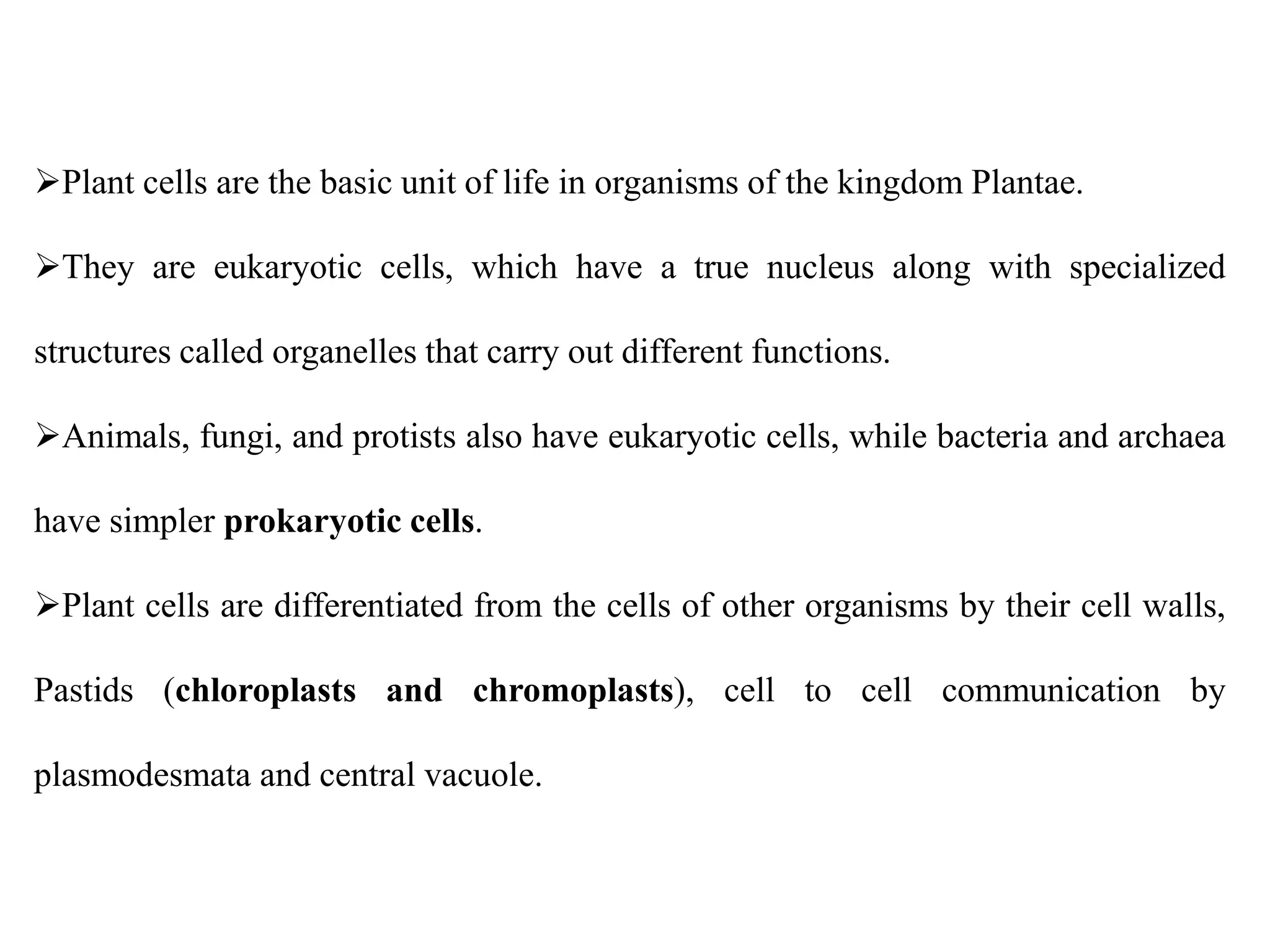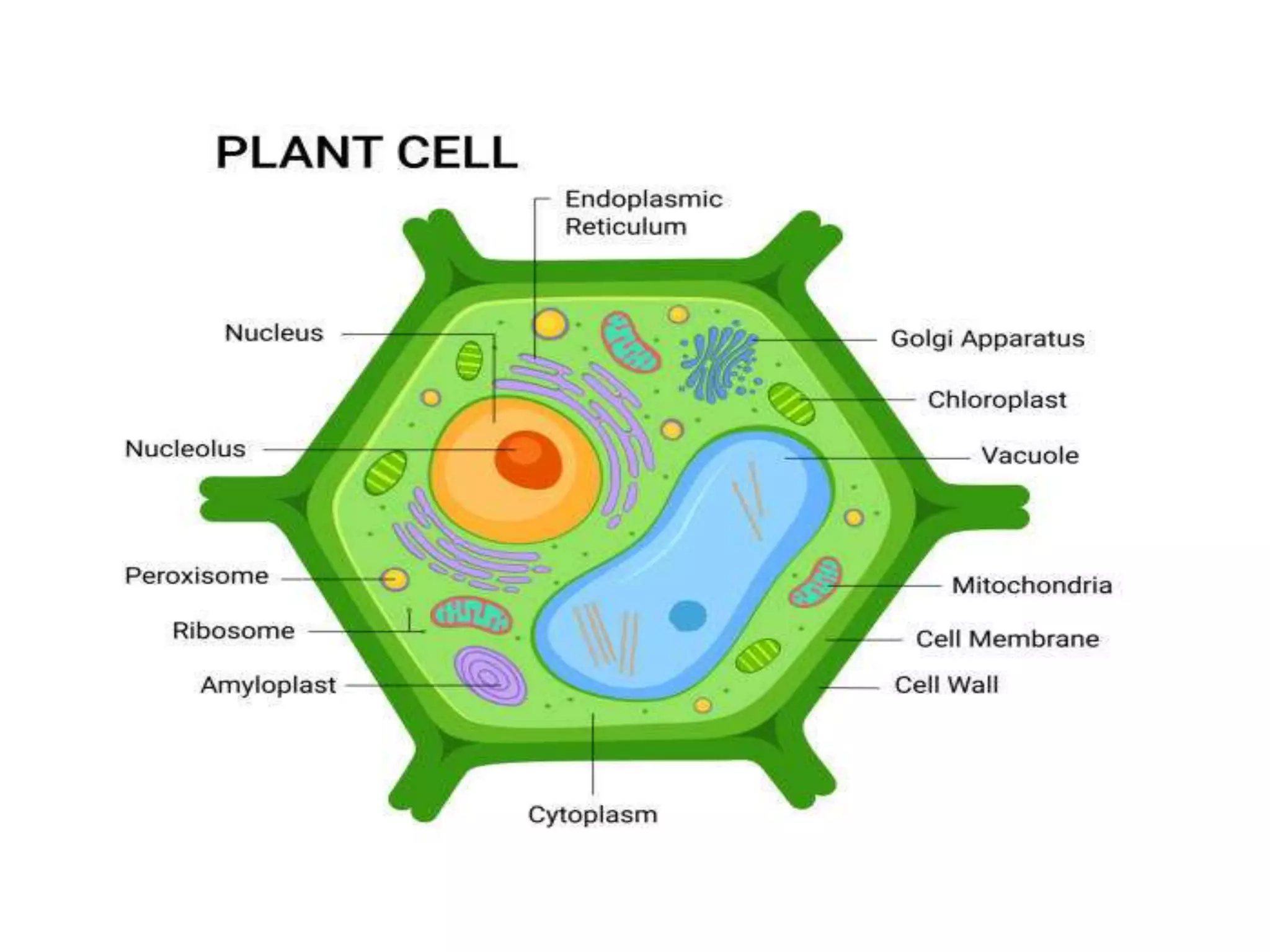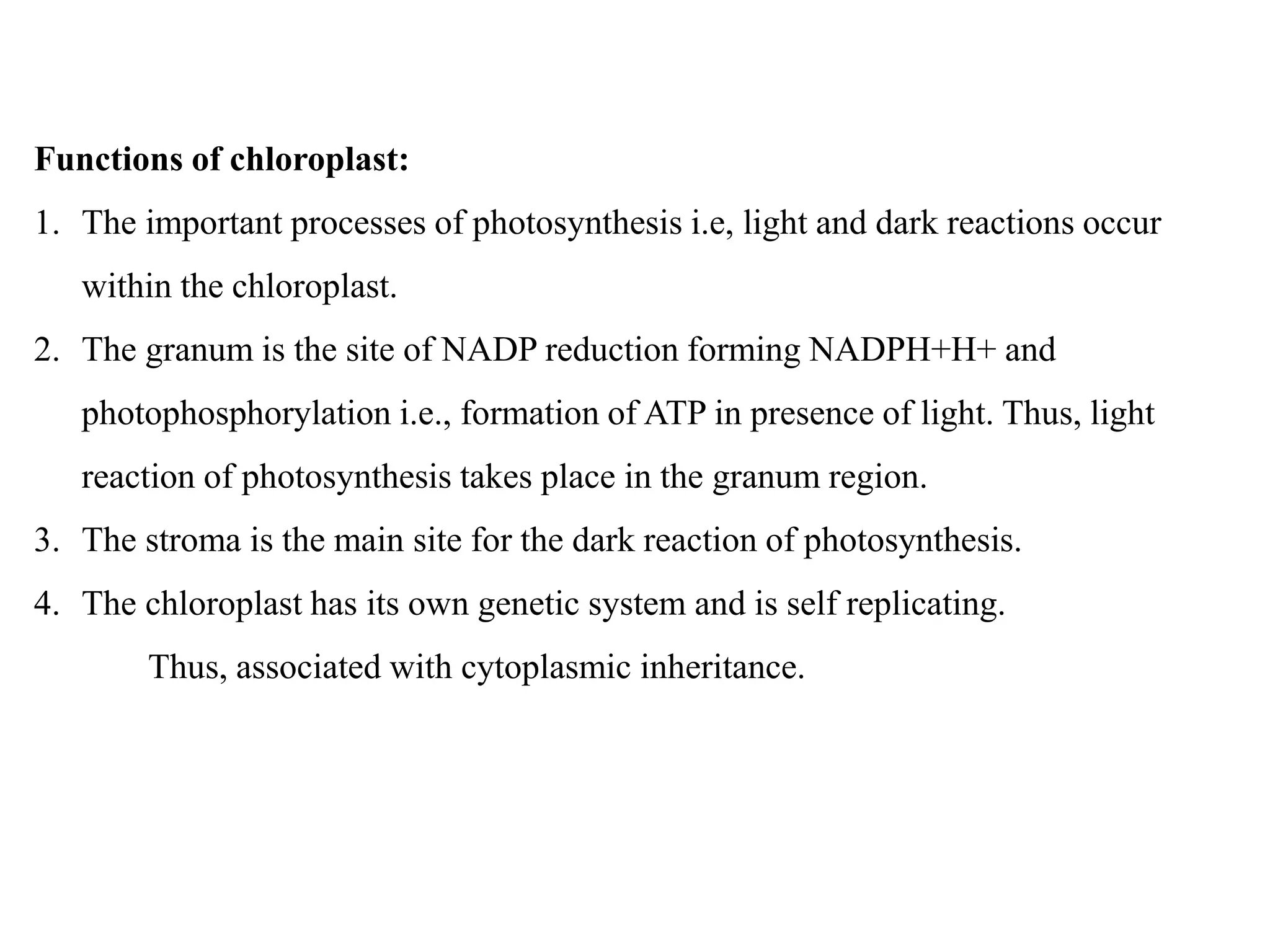The document provides an overview of plant cell structure and function. It describes the basic components of plant cells, including the cell wall, cell membrane, nucleus, chloroplasts, mitochondria, ribosomes, Golgi complex, endoplasmic reticulum, and central vacuole. It explains the structure and functions of each organelle. For example, it states that chloroplasts contain chlorophyll and are the site of photosynthesis, performing both the light-dependent and light-independent reactions. The mitochondria are described as the powerhouses of the cell, where cellular respiration and ATP production occur.




















